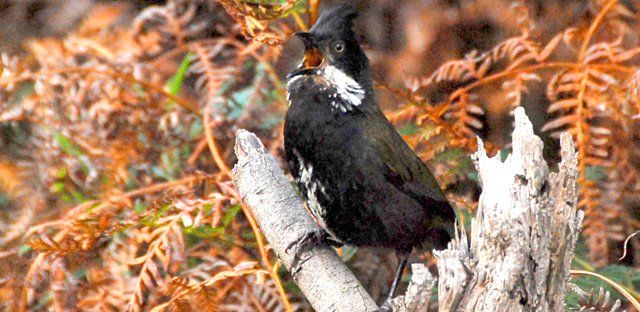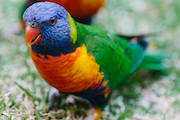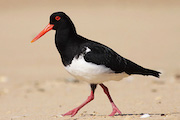Eastern whipbird
The secretive eastern whipbird has a blackish-green back, tail, head and crest, with a white belly and cheek patches, and a long tail. It is a medium sized bird growing to about 30 centimetres.

Where
Eastern whipbirds often hide in dense undergrowth in areas where there is thick, moist vegetation - look for them in areas near freshwater such as the Telegraph Creek walk at Green Patch. While they are secretive birds they are also quite curious - so be patient! You’re most likely to locate these birds by quietly listening - the male has a distinctive loud whip crack call often followed by the female with a quiet chuckling chew-chew.
Feeding
The eastern whipbird tends to feed alone or in small family groups on insects and other small invertebrates caught on the ground.
Breeding
The female bird builds the nest in low shrubs or vines from grass, twigs and fern fronds. She incubates the eggs, but both parents feed the young, sometimes raising two breeds in a season. A breeding pair of eastern whipbirds occupies a territory, which is defended year round, with the mates staying together for many years.
Sounds
A distinctive loud whip crack call from the male often followed by the female with a quiet chuckling chew-chew.
Stay in touch
Subscribe to receive important updates about Booderee National Park.




